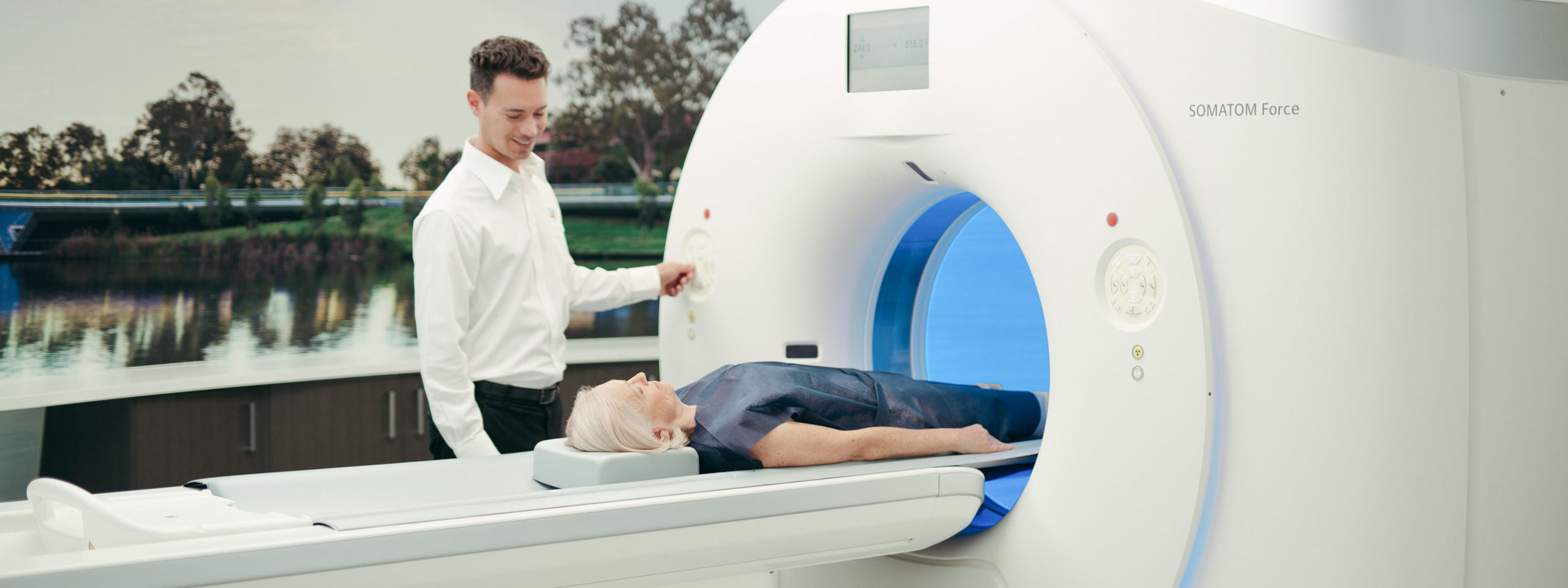A CT guided drainage involves drainage of fluid through a needle or plastic tube. The needle or tube is guided into place using an ultrasound, CT or X-Ray machine.
Procedure
You will be positioned in the best way to access the area to be drained. Your skin in the area to be drained will be cleaned with antiseptic and local anaesthetic will be given. The radiologist will make a small incision (cut) in the skin. A needle is usually inserted first, using an ultrasound, CT or x-ray machine to guide it into the correct area. A plastic tube is inserted to drain the fluid for collection. More than one pass of the needle may be needed to make sure the needle is in the correct place.
The tube will be held in position by a dressing on the skin.
Most commonly, a short stay hospital admission is arranged to allow the fluid to drain over several hours.
Sometimes, the tube may stay in overnight if you are an inpatient. Rarely, the drain is left in for longer periods.
The drain can be removed easily on the ward and a small dressing is applied.
Before your Scan
It is essential that your previous x-ray, CT or ultrasound films are available at the time of the drainage. Please bring these with you if you have them.
Please inform us if you are on medication to thin your blood (e.g. Warfarin, Aspirin or Clopidogrel). You may need to stop this prior to the procedure, but only after discussion with your doctor.
Before the drainage procedure, you may be asked to change into an examination gown for your comfort, and to ensure clothing does not affect the images. You may also be asked to remove jewellery, eye-glasses and any metal objects that might interfere with the imaging.
It is important that you have someone to drive you home after the procedure.
Risks / Side effects
Potential risks include:
- Infection – the biopsy uses aseptic technique (strict infection control practices) to minimise the risk of infection.
- Bleeding – the needle may puncture an organ or blood vessel. Rarely, excessive bleeding can occur and may require drainage, transfusion or surgery.
If the needle punctures the bowel, there may be some leakage into the abdominal cavity, which can cause infection and require surgery.
Other Information
The drain will stay in until your treating doctor decides it should be removed. This may be several hours or days.
Once the drain is removed, a dressing will be applied. There may be a small ooze of fluid from the site which should stop after a few hours.
You should avoid strenuous activity for 24 hours following the drainage.
You may experience some discomfort after the procedure. If required, a simple analgesic such as paracetamol (Panadol) should be sufficient. Do NOT take Aspirin.
It is important to note that infection is a potential and serious side effect. If you notice any increased redness, swelling, fever or pain, notify your referring doctor or immediately call the clinic where the drainage was performed.
Are you ready to make your CT (Computed Tomography) Scan appointment?
Our online booking platform allows you to quickly and easily make an appointment online.


